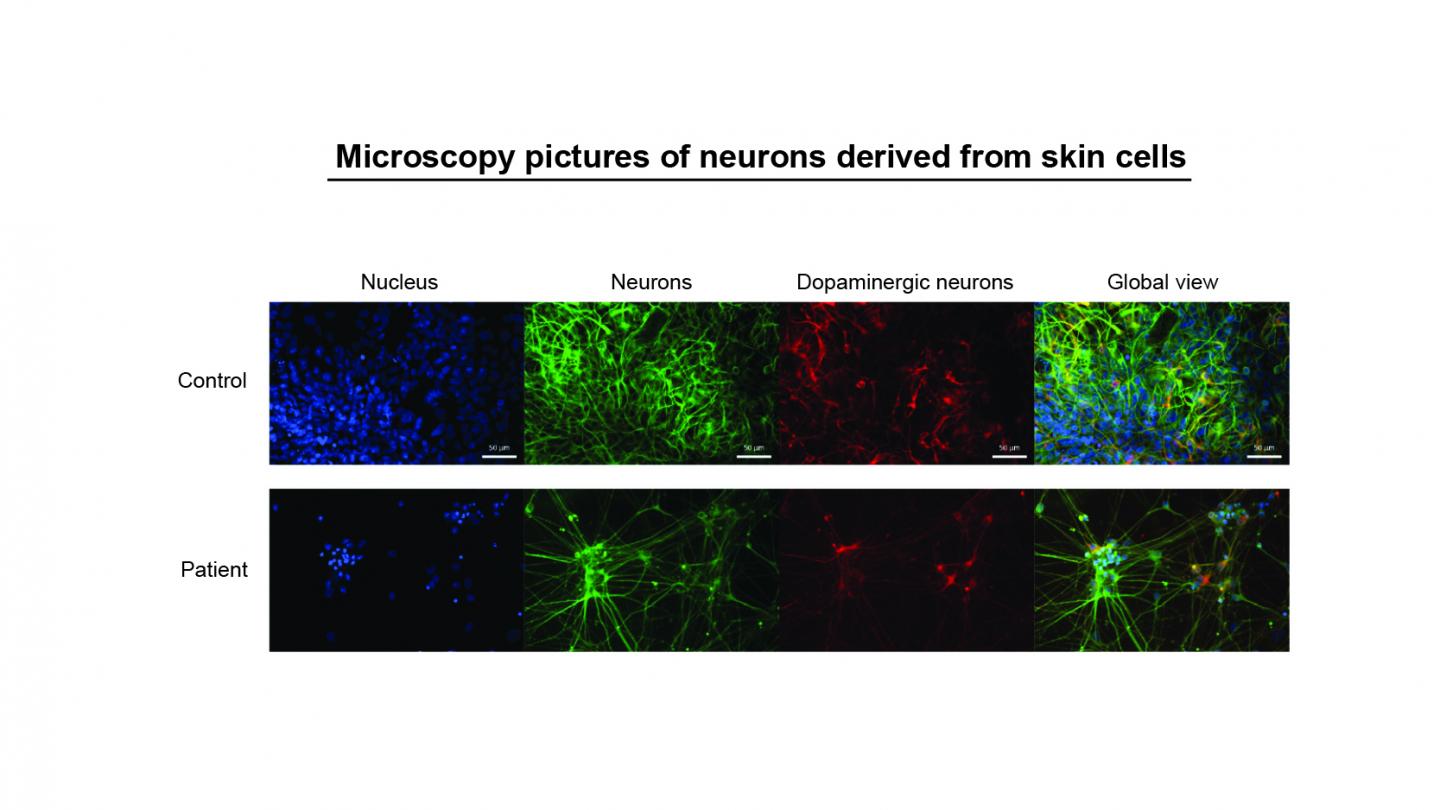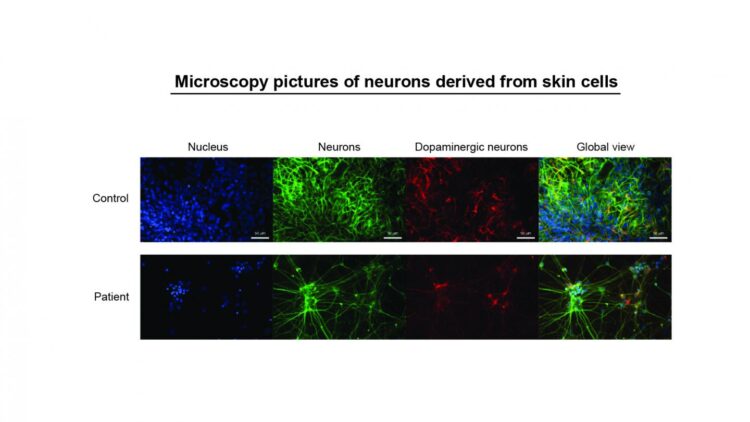In a seven-year research effort, an international team of scientists has clarified the cause for certain genetic forms of Parkinson’s disease, and has identified potential pharmacological treatments

Credit: University of Luxembourg
Luxembourg, 10 September 2020 – In a seven-year research effort, an international team of scientists has clarified the cause for certain genetic forms of Parkinson’s disease, and has identified potential pharmacological treatments. The interdisciplinary research team, led by Prof. Rejko Krüger, of the Luxembourg Centre for Systems Biomedicine (LCSB) of the University of Luxembourg, experimented on patient-based cell cultures in the laboratory. The new combination of active substances they identified will have to undergo clinical trials before they can be used to treat patients. The research team published its results today in the prestigious scientific journal Science Translational Medicine.
Lack of protein DJ-1 makes you sick
A protein called DJ-1 plays a crucial role in keeping nerve cells functioning. If the body is unable to produce ample amounts of DJ-1, important nerve cells die. The result is the onset of neuro-degenerative diseases such as Parkinson’s. The production of important proteins like DJ-1 can be disrupted or halted permanently if the genetic blueprints or the production processes they encode are defective.
Now, Prof. Rejko Krüger’s research team in Luxembourg has succeeded in identifying for the first time the importance of an error in the production process known as ‘splicing’ in the development of a certain form of Parkinson’s disease. “In the patients, an essential tool for the assembly of the protein DJ-1 fails to dock properly,” Krüger explains. “In scientific terms, we call that exon skipping. As a result of this defect, the protein doesn’t get built at all.” The research result offers an entirely new point of attack for treating this malfunction of protein synthesis with drugs. “This insight fundamentally changes our view of the causes of the disease and presents entirely new possibilities for treatment,” says Dr Ibrahim Boussaad, LCSB scientist and first author of the scientific paper. “We could only gain this new understanding thanks to the skin cells from the patients,” Boussaad emphasises.
Cell donation enables progress
The Luxembourg Parkinson’s Study, initiated in 2015 (see also http://www.
Luxembourg’s interdisciplinarity is a key to this success
Precise bioinformatics algorithms developed at the LCSB allowed the research team to immediately carry out an automated search for potential active substances for drug treatment. This yielded a hit in the form of the active compounds phenylbutyric acid and RECTAS (RECTifier of Aberrant Splicing). Administered in combination, these two active substances allow the cells in the test tube to effectively reactivate the production of the important protein DJ-1. “Only by combining numerous disciplines – from medical practice, to laboratory research, to computer science – could we understand the cause and at the same time identify active substances for a potential treatment,” Prof. Rejko Krüger explains. He adds, “This kind of scientific progress ‘Made in Luxembourg’ is possible because all the necessary disciplines have been unified in Luxembourg for several years now.” This work represents the high point to date of the PEARL program of the Luxembourg National Research Fund (FNR), through which the research of Prof. Krüger and his team is funded. The team of scientists especially expresses its gratitude to the people who are participating in the Luxembourg Parkinson’s Study and who have made this research possible in the first place.
###
More information about the Luxembourg Parkinson’s Study, including participation in the study, can be found at http://www.
Reference: Boussaad et al., A patient-based model of RNA mis-splicing uncovers treatment targets in Parkinson’s disease, Science Translational Medicine, 9 September 2020. DOI: 10.1126/scitranslmed.aau3960
About the LCSB
The LCSB is an interdisciplinary research centre at the University of Luxembourg. It is accelerating biomedical research by closing the link between systems biology?and medical research. Collaboration between biologists, medical and computer scientists, physicists, engineers as well as mathematicians is offering new insights in complex systems like cells, organs and organisms. These findings are essential for understanding principal mechanisms of disease pathogenesis and for developing new tools in diagnostics and therapy.
Neurodegenerative diseases like Parkinson’s Disease and description of diseases as networks are in the focus of LCSB’s research. The Centre has established strategic partnerships with leading biomedical laboratories worldwide and with all major biological and medical research units in Luxembourg. The LCSB fosters collaboration with industrial partners and has founded several spin-off companies, thereby accelerating the translation of fundamental research results into clinical applications.
Contact: Laura Bianchi, T. (+352) 46 66 44 9451, E. [email protected].
Media Contact
Laura Bianchi
[email protected]





